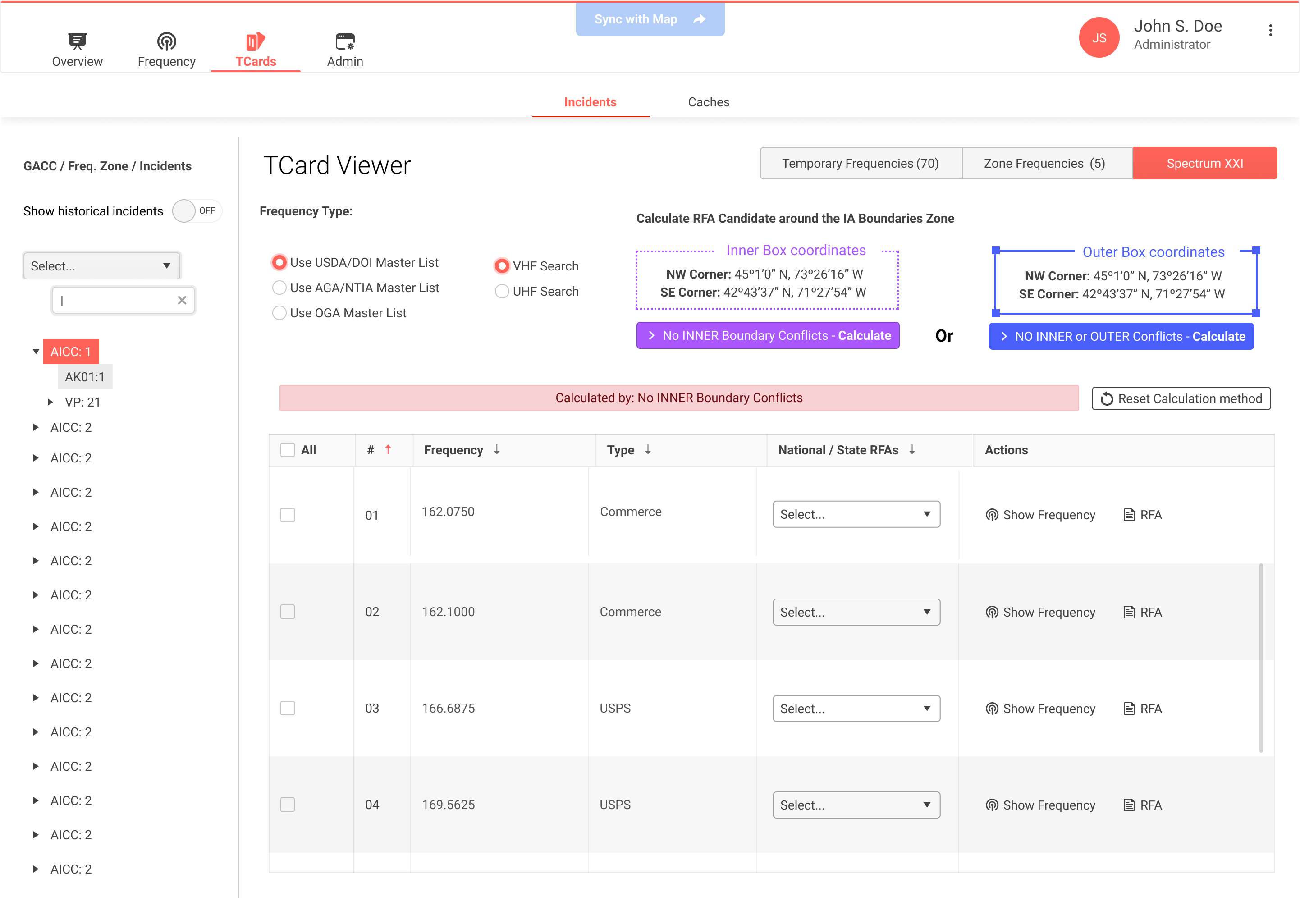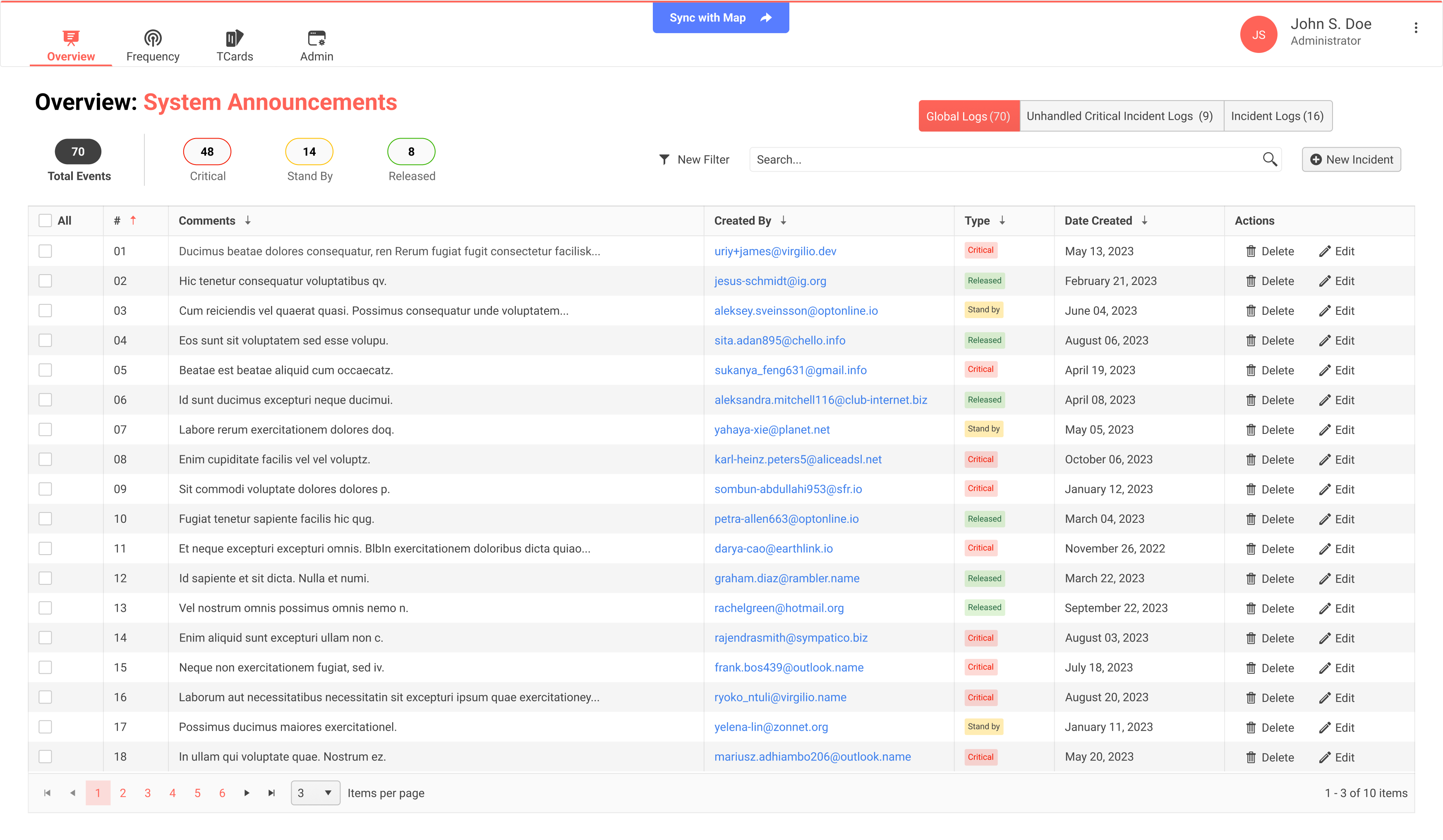CFETS — Wildfire Management Platform Redesign
Modernizing a mission-critical web tool for federal technicians tracking radio frequencies and operational data in real time.
Design Implementation & Accessibility
Explore how visual refinement, responsive design, and accessibility principles came together to create a modern, user-first experience across all devices.
Project Overview
The CFETS (Communication Frequencies and Event Tracking System) platform supports wildfire management operations across all U.S. territories through the Fire Enterprise Geospatial Portal (EGP).
As the Lead UX/UI Designer and Researcher for Synergy BIS, I led the redesign of this mission-critical web tool used by federal technicians to track radio frequencies, incidents, and operational data in real time.
The goal was to modernize the system's interface, streamline workflows, and implement a Kendo UI design system aligned with Section 508 accessibility and Angular framework standards.
Project Summary
Timeline & Team
3 months
Lead UX/UI Designer and Researcher, Database Team, IA Team, Engineering Team
Tools & Methodology
Kendo UI, Angular
User-centered design with rapid prototyping and accessibility compliance
Key Deliverables
- • User interviews (7 sessions)
- • Wireframes
- • Low-fidelity prototypes
- • Kendo UI design system
- • Section 508 compliance documentation
Performance Metrics
Improved navigation efficiency
(measured by reduced task completion steps during user testing)
Increase in user satisfaction
(based on post-test surveys and technician interviews)
Reduction in redundant UI components
(after implementing modular Kendo UI system patterns)
Problem Statement
Challenge
Designing for a technically complex environment with a small, multi-disciplinary team under a fixed three-month timeline.
The interface needed to support data-dense operations while remaining intuitive under emergency conditions.
Approach
Following a user-centered design methodology:
- Conducted user interviews with field technicians to uncover navigation and workflow pain points.
- Created wireframes in Balsamiq for rapid iteration under strict timelines.
- Developed low-fidelity prototypes to validate structure before high-fidelity design.
- Integrated a customized Kendo UI system for Angular to ensure cross-module consistency.
- Collaborated with the database and IA teams to align content hierarchy with user tasks.
Solution
Delivered a redesigned web application with:
- Simplified and unified navigation.
- A modular design system using Kendo UI components.
- Consistent iconography, typography, and visual hierarchy.
- Full accessibility (Section 508) compliance with WCAG 2.1 AA standards.
- Optimized workflows that reduced task completion time by 30%.
Results
The redesigned CFETS platform improved usability, clarity, and performance across wildfire management operations.
By introducing a modular design system and consistent interaction model, the project increased user adoption and reduced interface errors.
Accessibility compliance was achieved through enhanced keyboard navigation, color contrast validation, and screen-reader optimization.
Although the project concluded after its initial phase due to budget constraints, the deliverables established a scalable UX foundation for future EGP modules.
Key Takeaway
The CFETS redesign proved that even within strict government constraints, applying UX research, modular design systems, and accessibility standards can transform a legacy platform into a scalable, user-centric product that enhances decision-making during wildfire operations.


